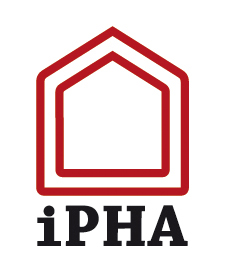You are here
Guidelines for heating and domestic hot water
Energy efficient heating and domestic hot water for building refurbishing and modernization
Rainer Pfluger, University of Innsbruck, Rainer.Pfluger@uibk.ac.at
Alexander Thür, University of Innsbruck, Alexander.Thuer@uibk.ac.at
1. Heating adapted to deep retrofit:
Deep retrofit of the building envelope reduces the heating energy demand by a factor of up to ten. At the same time, the heating load and consequently the size and power of the heat generator is reduced significantly, too.
Further information on heating will follow soon.
2. Domestic hot water and sewage heat recovery:
The energy balance of buildings after a deep retrofit shows that the relevance of the heat for domestic hot water (DHW) compared to the heating demand is high. In some cases of high efficient refurbishment, close to passive house standard, the heat demand for heating is even lower than the demand for DHW production and distribution in terms of the yearly energy demand. In general, there are four main saving potentials for DHW: Reduction of circulation pipe and storage tank losses as well as flow reduction and shower heat recovery.
Reduction of circulation pipe losses
In multi-family homes, a circulation is necessary for DHW comfort, to avoid the latency for warm water drawing. For hygienic reasons, the temperature of this pipe has to be kept at 60 °C in order to avoid legionella growth. This pipe system has to be well insulated to avoid high DHW distribution losses. Especially in summertime this losses have negative impact on the avoiding of overheating, but even in wintertime, the heat from DHW-ducts is uncontrolled heat and should be reduced to a minimum. The following measures help to reduce these losses:
- Reduction of the duct length
- Insulation thickness double of the duct diameter
- Pipe in pipe circulation system
The reduction of operation time and temperature of the circulation loop is only in accordance with hygienic standards, if there is chlorine disinfection (e.g. by electro-chemical diaphragm-electrolysis) or UV disinfection.
Reduction of thermal storage tank losses
Beside the distribution losses (ducts), the storage losses are one of the mayor reasons for high DHW heat consumptions. First of all, it should be clarified if the tank volume can be reduced or even if the tank can be completely eliminated (instantaneous water heaters, tankless water heaters). If the tank cannot be avoided, it should be well insulated. The quality of the insulation depends on the material (thermal conductivity), thickness and avoidance of convection between insulation and storage tank wall. The insulation should cover all warm parts, especially the flanges and fittings.
Flow limiter and low-flow showerheads
The highest effect in terms of efficiency is the reduction of the tapped DHW by the user (reduction of shower time etc.). A technical solution for reduction of the tapped amount of water is the flow limiter and the low-flow showerheads. Both result in a limitation of the rate of flow. The advantages of special low-flow showerheads are, that they intend to reduce the rate of flow with only a small loss of comfort. For practical reasons the saving potential is limited, further reduction is possible by application of heat recovery as described hereunder.
Shower heat recovery
In addition to potential savings in the field of storage and distribution losses as well as the use of water-saving fixtures, the heat recovery from the waste water has proved to be a cost-effective solution. Drain water heat recovery can be used in different ways to reuse the heat of waste water. It can be used as heat source for heat pumps ore directly for preheating of DHW.
Specifically, the shower water heat recovery is a promising solution, based on the available amount of waste water and the hot water demand and waste heat supply occurring practically simultaneously (this is not the case for having a bath in a bath tub, because the water is drained later than it’s tapped). Therefore the shower heat recovery is in some countries (especially in the Netherlands) already a widespread technology. Vertically arranged heat exchangers are the most efficient both in terms of costs and of heat recovery. The subsequent use in refurbishment raises the problem of the interference with the underlying housing unit. The heat exchanger should be mounted horizontally in this case, however, systems currently on the market are significantly less efficient. Attention has to be paid to both, a highly compact design with the ability to integrate into the shower tray as well as to the most simple and efficient cleaning.
An overview of both types of shower water heat recovery with certified values of heat recovery can be found here.
Installation of drain-water-heat-recovery heat-exchanged in the bathroom of BEST nbr. 3:
Photo Source: Pavel Sevela
Heat recovery system directly integrated in the shower tray, dynamic efficiency 36% measured according to PHI-criteria within a real field measurement test in a small dwelling in Innsbruck:
Photo Source: Pavel Sevela
Shower heat recovery allows to reduce the total useful heat demand for hot water by 25 to 35%. The efficiency achieved depends on the way of hydraulic connection:
The highest savings are achieved when the heat exchangers supply the cold and hot water connection of the shower.
If the heat exchanger is only connected to the hot water connection, high hot water temperatures noticeably reduce the degree of utilization.
If the heat exchanger is only connected to the cold water connection, scarcely any heat is recovered if the hot water temperature set-point is low.
3. Combined Solutions for heating and DHW in building modernization:
Further information on this topic is to follow soon.





